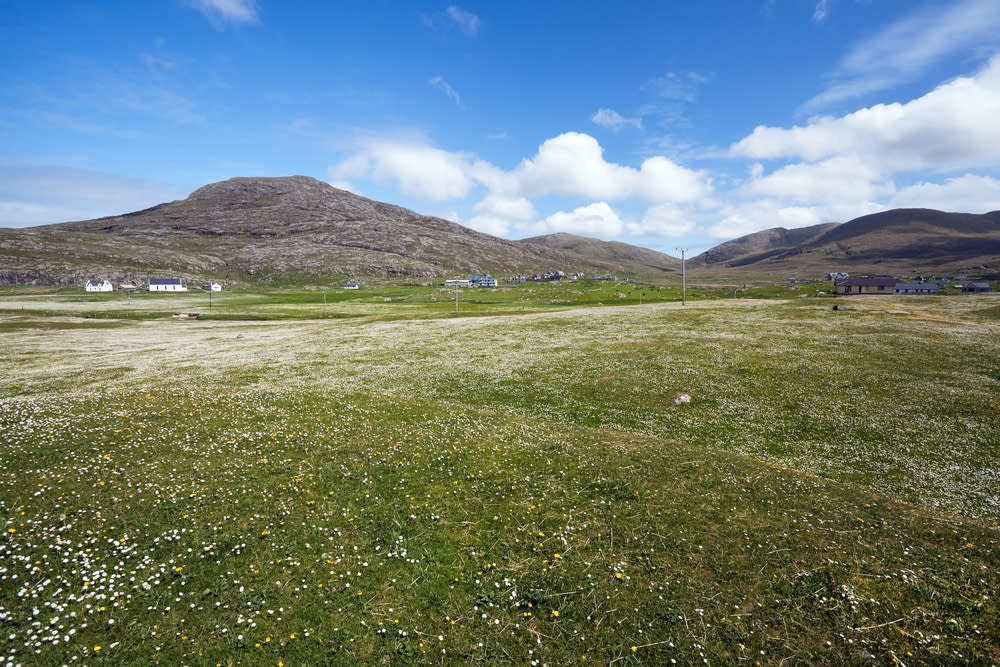More from Barra
Main Menu
- 00:00
- 06:00
- 12:00
- 18:00
- 23:00
Barra : Next 24-Hour Weather
Today - 17th April 2025
Sunrise 06:16
Sunset 20:44
Tomorrow - 18th April 2025
Sunrise 06:16
Sunset 20:44
Holiday Weather Now
Sorted by popularity:
Updated at 18:00 GMT
-
Temp feels like7°C45°F
-
Length of day14h 28m
-
Pressure29" (1011 hpa)
-
Visibility10 km (6miles)
-
Wind speed14 km/h
Sunrise 06:16
Sunset 20:44
-
Temp feels like:
7ºC (45 ºF)
-
Length of day:
14h 28m
-
Pressure:
29" (1011 hpa)
-
Visibility:
6 miles (10 km)
-
Wind speed:
14 km/h
Barra is an island in the Outer Hebrides, an island chain off the north-western coast of Scotland in the United Kingdom.
<?xml:namespace prefix = o ns = "urn:schemas-microsoft-com:office:office" />
Barra, like the rest of the Outer Hebrides, experiences a cool, temperate maritime climate. Bearing in mind their northerly latitude, Barra and the Outer Hebrides have a remarkably mild and consistent climate thanks to the influence of the Gulf Stream. Year-round, however, the weather is dominated by winds.
Summer
Summer, from June to September, is cool â" with the average temperatures never getting above 16°C. July and August are the warmest months, both of which seeing average temperatures of 16°C. June and September are slightly cooler, with averages of 14°C and 15°C respectively. Average lows are surprisingly high during the summer, illustrating the consistency in the weather.
Rainfall is high year-round, but the summer months see relatively low levels compared to autumn and winter. June sees average rainfall of 54mm, while 49mm can be expected in July. August and September both average 55mm. These levels are comparable to those found in London or Paris at the same time of year. Visitors are advised to carry rain-appropriate clothing even in summer, as 10 days with some rain per month is the norm during summer.
Wind is a constant feature of the weather due to Barraâs exposed position on the north-west coast of Scotland, unshielded from the North Atlantic. Breezes, and sometimes stronger winds, continue throughout the summer, especially at exposed locations such as the sandy beaches on the western side of the island.
Autumn
Autumn is from late-September to mid-November. Naturally, temperatures drop â" to an average of 12°C in October, and 10°C in November, so daytime temperatures can be quite cold. The biggest change in autumn is that rainfall dramatically increases. October sees rainfall levels nearly double from September, shooting up to an average of 97mm. This is accompanied by an increase in the number of days in which rain falls, which rises to 14. November is similarly wet, and sees an average of 16 days with some rain.
Winds also pick up, and autumn is often the windiest time of year, with fierce storms frequently battering the island.
Winter
Winter lasts from mid-November to March and the weather much milder than might be expected. Average temperatures drop to 8°C in December and remain roughly constant throughout January and February before rising slightly to 9°C in March. Rainfall is high in December and January, and January is the wettest month of the year with an average of 99mm of rain. Some rain falls on an average of 16 days during January. February and March are drier than December and January â" rainfall levels fall to 69mm during February and to 61mm in March.
Spring
April and May are the spring months, and see average temperatures push into double figures with average temperatures of 10°C during April and 13°C in May. Spring is the driest season of the year and both April and May see low rainfall levels compared to the rest of the year. Rainfall in April is 43mm and May is the driest month of the year with an average of 35mm of rain.

















